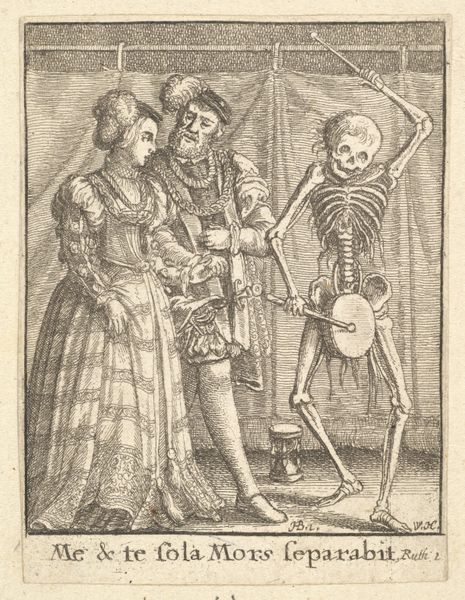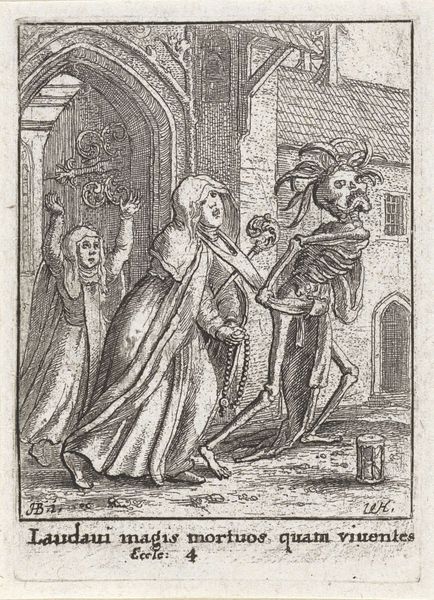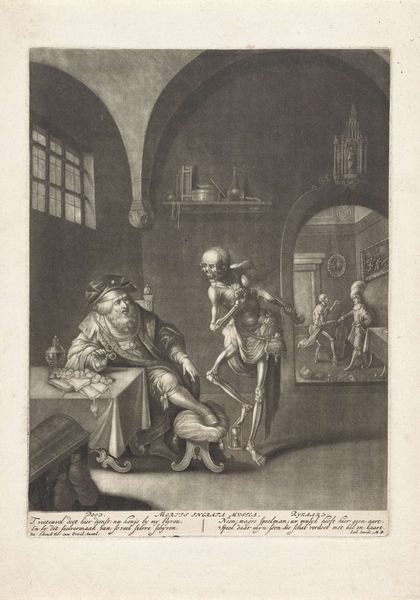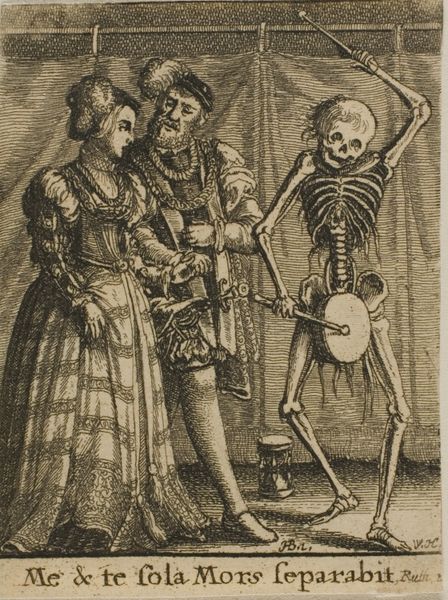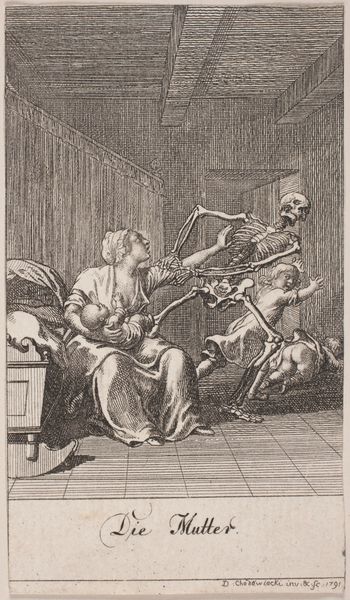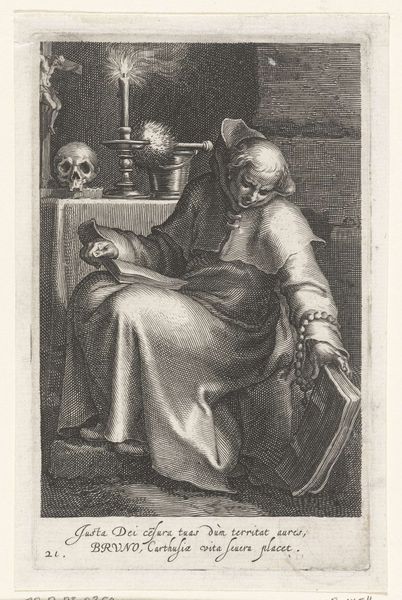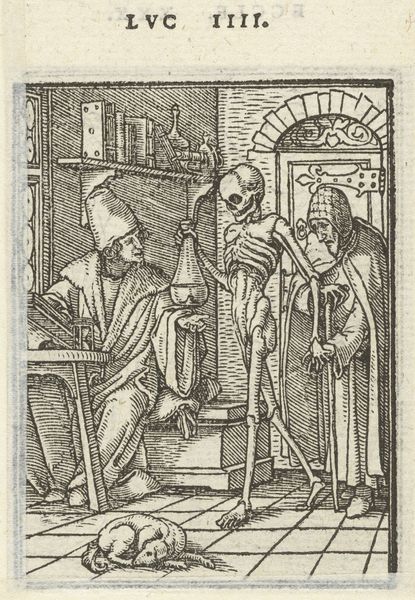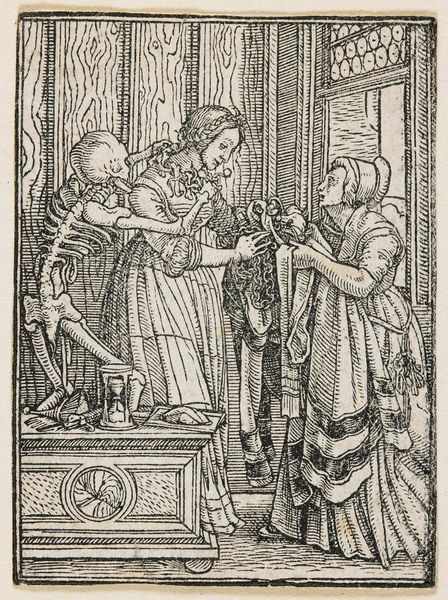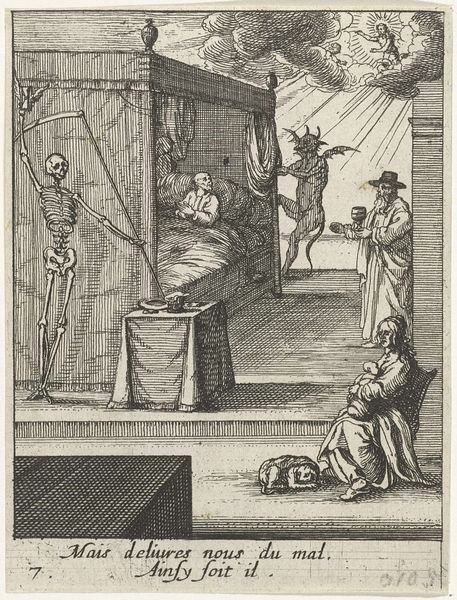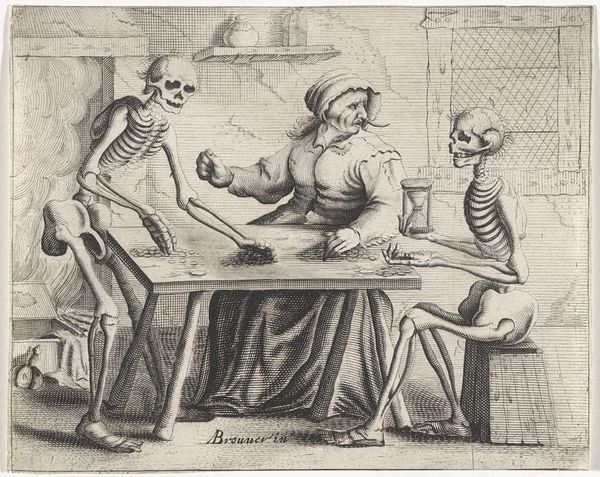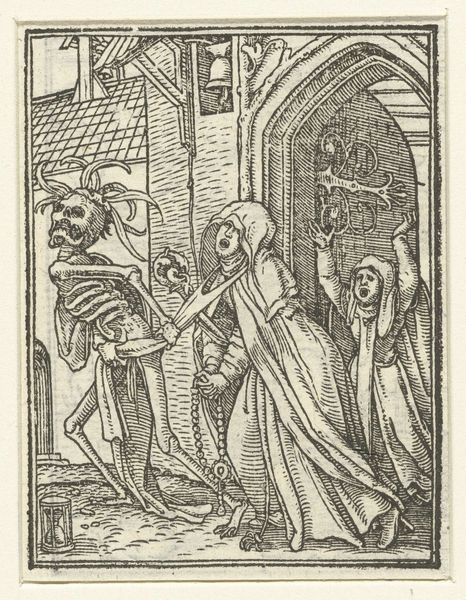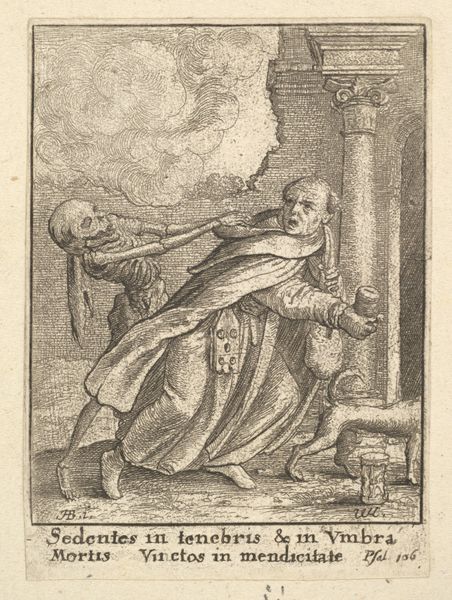
print, engraving
#
narrative-art
#
baroque
# print
#
old engraving style
#
vanitas
#
momento-mori
#
history-painting
#
engraving
Dimensions: height 75 mm, width 55 mm
Copyright: Rijks Museum: Open Domain
Curator: Welcome to the Rijksmuseum. We’re standing before “The Countess and Death,” an engraving created around 1680 by Wenceslaus Hollar. Editor: What strikes me immediately is the crispness of the lines, the stark contrast in values for being such an old print; everything is so defined, almost geometric in its precision. And yet, a bit chilling, no? Curator: Indeed. Hollar situates the scene within a rich tradition of “vanitas” imagery and memento mori, a prevalent theme during the Baroque period reminding us of the transience of life and the inevitability of death, regardless of social standing. Consider the historical context: Europe was ravaged by plague and constant warfare; Death was always lurking close. Editor: Look at the composition. We have a well-dressed noblewoman, attended by her maid. But behind her looms a skeletal figure of Death, placing a bony hand on her shoulder. The diagonal lines guide your eye from the countess right over to that skeleton, and back again, never allowing you to ignore it. I’d wager the symbolism is anything but subtle. Curator: Precisely. The items displayed – jewelry, perhaps cosmetics, on the chest—emphasize worldly vanity and earthly pleasures compared to the grim reminder lurking behind the noblewoman’s back. Note how the maid averts her gaze as well, while paradoxically displaying the finery. This really reinforces themes around class and complicity. Death comes to everyone regardless. Editor: It’s an allegory in visual form! All that lovely material and careful attention to capturing folds of clothing versus the graphic depiction of the skeleton! I also can’t help but admire Hollar's skillful engraving—such detail achieved with mere lines and cross-hatching. There is incredible dynamism here. Curator: Viewing the work today invites contemplation on contemporary social inequalities and vulnerabilities. While death may be universal, the risks associated with class, race and gender reveal that some lives are, sadly, more precarious than others. Acknowledging this truth in art can catalyze essential dialogue. Editor: So true. It certainly highlights how much a formal analysis can deepen an understanding of a work steeped in relevant, potent themes.
Comments
No comments
Be the first to comment and join the conversation on the ultimate creative platform.
